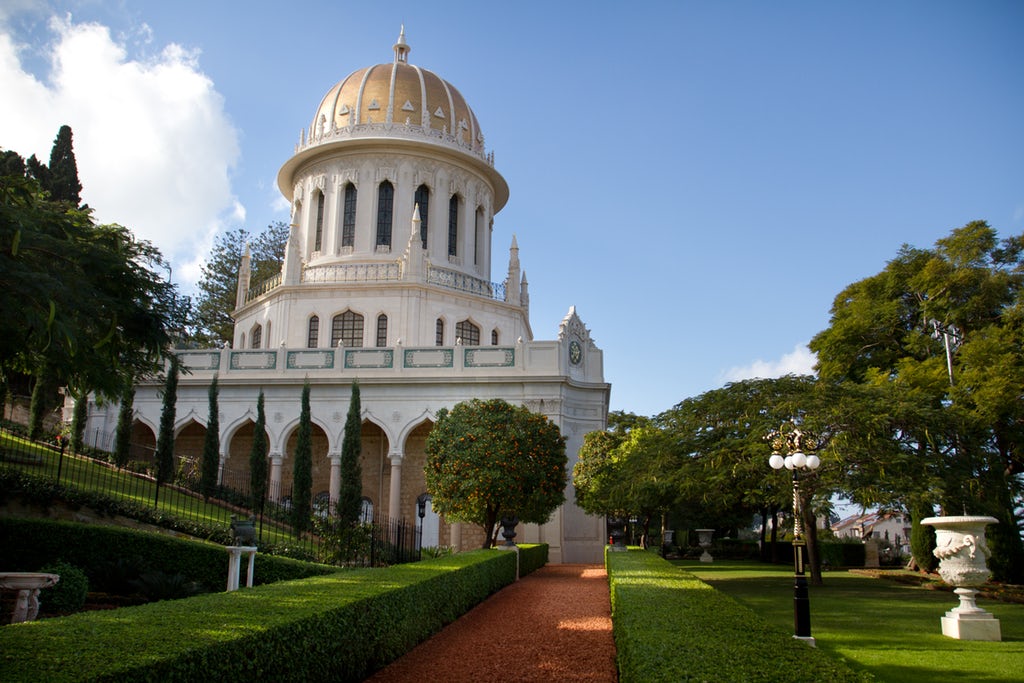The Revelation of God for humanity in our time in history actually has two prophetic figures- the Báb and Baha’u’llah himself. The Báb proceeded Baha’u’llah and prepared Persian society for his coming and to accept His teachings, thus forming the community of early believers that have now spread His Revelation all over the world. This post will summarize the story of the Báb. A related post compares the life of the Báb with that of John the Baptist, to whom He is often appropriately compared.
The prophet known to history as the Báb (“the Gate”) was born in the Persian city of Shiraz in 1819 and trained as a merchant before announcing His mission as a Prophet of God in 1844 at the age of 24. Similar to Jesus, He had none of the features that would give him religious authority within His society. He never trained in religion and was not formally taught Arabic, the language of Islam. His claim to prophethood was distinctly against the traditional Muslim belief, who interpreted Muhammad’s self-description as the “Seal of the Prophets” as meaning He was the last prophet. Instead of a new prophet, Muslims anticipated a final Judgment Day, a Day of Resurrection, in which the final battle for ultimate victory would occur, with the “resurrection” of believers from their graves to fight the final battle. But here was a 24 year old merchant, with no army, no seal of authority, revealing verses in Arabic that clearly made claims to be a divine revelation. Virtually none of the things people expected to happen at the “end of time” were associated with His religion. Despite that, His religion spread like wildfire and inspired heroic devotion because of the power of His words.
His initial revelations had features that were reminiscent of the Quran itself, and it was regarded by his initial followers as a “new Quran”. They vigorously promoted it throughout Persian society and it soon became a mass movement of significant energy, matched only by the energy of the government and clergy to suppress it, who regarded it as a heresy and a threat to the State. The Bab was eventually brought to trial in the Persian city of Tabriz, where He was questioned about His claims by senior religious officials in the presence of the Crown Prince, the future Nasir-din Shah. He stood up boldly in the gathering and stated “I am the Promised One, I am the One whose name you have for a thousand years invoked, at whose mention you have risen, and whose advent you have prayed God to hasten.” The boldness of His statement led to the adjournment of the trial and His beating and imprisonment. The Báb remained a prisoner in a far off mountain fortress for the remainder of His mission, until He was put to death by firing squad in the city of Tabriz in May of 1850.
The Báb’s message went through several stages as He gradually revealed the full measure of His claim and His theology, culminating in the revelation of His major work- the Bayan– or “Exposition”- while a prisoner in the mountain fortress. In that and supportive works, He explained that God was an entity beyond human understanding to know in any direct sense, but He made His reality manifest “to His creation, through His creation”, specifically through the revelations that formed the religions of humankind. These revelations had occurred throughout human history and were a “natural phenomenon”, like the rising and setting of the sun, illuminating human understanding like the sun illuminates the material world. The revelations of God were evolutionary, as each one built on the others before it, continually unfolding to humanity the full spectrum of the knowledge of God, a process that could have no end.
Within that framework, traditional religious terms were given new meanings. The “Day of Resurrection’ was not like something out of a fantasy movie, but was the day when a new messenger brought a new revelation to humanity. “Paradise” was when anything reached its stage of perfection, a state that humans could only fully achieve by accepting the revelations of God. One fascinating angle on the Báb is the realization that He was a contemporary of many intellectuals and philosophers in Europe who have had a major influence on the modern conceptions of religion- thinkers like Feuerbach, Darwin, Nietzsche, and Marx. Because of the cultural distance, more so than the geographic one, the two intellectual streams never met, but the young Prophet addressed in creative ways the challenges raised by the their views. Ironically, while they predicted the death of religion, the Báb was almost simultaneously proclaiming its renewal.
He was described by all who met him as extraordinarily gracious and polite, elegant and refined in His bearing. He had to be moved in his prison several times because the guards who were responsible for Him came to be so devoted to Him that they no longer did their jobs effectively. His mission was one of sacrifice and martyrdom, and He knew it, and expressed it frequently in His writings, as there was no chance His society could accept such a challenging claim without severe persecution coming in its wake. Nevertheless, He always acted with dignity and composure, with an air of detachment in His writings that is very striking.
As His religion reached its climax, and He had tens of thousands of followers, He funneled all their devotion into the One who would come after Him- a figure He described as “Him Whom God Shall Make Manifest”. The Báb summarized His mission as to “devise means” whereby people would turn unto Him when he manifested Himself, for “thereby they will have attained the summit of their existence, and will have been brought face to face with their Beloved, and will have recognized, to the fullest extent attainable in the world of being, the splendor of Him Who is the Desire of their hearts.” Virtually every chapter in the Bayan mentions “Him Whom God Shall Make Manifest” and he clearly stated that all His laws and teachings had as their explicit intention that people would accept Him when He came.
The Báb’s promises reached their fulfillment 19 years later, when Baha’u’llah announced a new universal revelation to humanity in a small garden outside of Baghdad in 1863.
Photo is of the Shrine of the Bab and the Baha’i Gardens. Haifa, Israel. Courtesy of Baha’i Media Bank.




